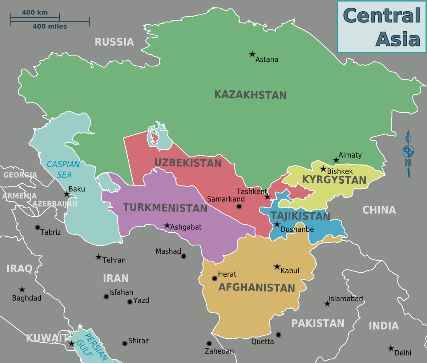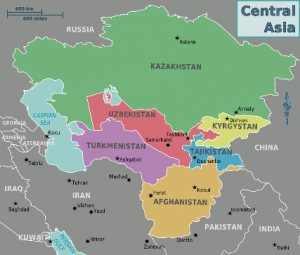
China Doubles Down in Central Asia with New Natural Gas Pipeline
China Doubles Down in Central Asia with New Natural Gas Pipeline
The third line of the China-Central Asia Natural Gas Pipeline is officially operational. The pipeline, known as Line C, begins at the Turkmenistan-Uzbekistan border and ends at the Horgos Port in the Northwest Chinese province of Xinjiang.
The 1,830 Km pipeline, which was built by the China National Petroleum Corp. (CNPC), runs through central Uzbekistan and southern Kazakhstan before reaching China. Line C complements two other pipelines, Line A and Line B. A fourth pipeline, Line D, is scheduled to begin construction in December.
Currently, Line C transports 7 billion cubic meters (cm) of natural gas across Central Asia into China. The CNPC predicts that Line C will eventually transport over 25 billion cm of natural gas by the end of next year. Turkmenistan and Uzbekistan are projected to supply over 10 billion cm of natural gas while Kazakhstan will contribute roughly 5 billion cm.
The construction of Line C and D illustrate the deepening economic ties between China and Central Asia. China is continuously depending on Central Asia for its energy needs. Central Asia will be supplying over 40 percent of natural gas imports to China when Line D is fully functioning by 2020.
China is fostering close economic ties with Uzbekistan, Turkmenistan, and Kazakhstan, but is also enriching the poorer nations of Tajikistan and Kyrgyzstan. Line D, which will originate in Turkmenistan and end in China, will run through Tajikistan and Kyrgyzstan allowing these countries to collect substantial transit fees from China.
China is increasing its foothold and presence in Central Asia with the creation of Line D. Line D will be the longest and most expensive of the China-Central Asia pipelines covering over 7,000 Km. China could potentially be designing Line D to run through Tajikistan and Kyrgyzstan in order to diversify the routing of its various pipelines.
Currently, Line A, B, and C run parallel with each other through Uzbekistan and Kazakhstan. China recently signed a $400 Billion deal with Russian natural gas producer Gazprom to supply gas to China from Russia. The move is seen as a way for Russia to diversify away from the European energy market. It could also be a way for China to open new pipeline routes away from Central Asia
Overall, China continues to increase its presence in Central Asia through the construction of lucrative and expansive pipelines which stretch across Central Asia. China is now in the process of diversifying the routes and origins of their natural gas pipelines in order to decrease geopolitical risk and increase their influence across Central Asia.







Great article. Very insightful
[…] China Doubles Down in Central Asia with New Natural Gas Pipeline Alexander Gupta The third line of the China-Central Asia Natural Gas Pipeline is officially operational. […]
Very interesting, the demand is still outstripping supply even with Line D in the works.
[…] has only positive relations with Uzbekistan, since the critical China-Central Asia Natural GasPipeline traverses the entire territory of this SCO member. As for the West, although the US had its […]
[…] minor to their bilateral relationship as Uzbekistan, while China’s hefty energy investments and pivotal pipeline transit through Uzbekistan makes it so that Beijing will not turn a blind eye towards Tashkent’s […]
[…] China Doubles Down in Central Asia with New Natural Gas Pipeline […]